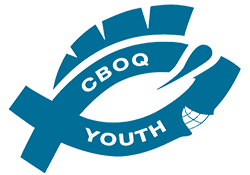One key way we come to know God is through Scripture. We believe it is the inspired word of God, a primary channel through which he shares his love and his directives with humanity. We’ve also seen that biblical literacy is very low in the Canadian church (e.g. just 14% of Canadians read the Bible at least once a month in 2013, down from 28% in 1996). Building biblical understanding is crucial to faith formation.
Here are some ways to build biblical understanding:
- Intentional teaching times
The Bible, being a library of 66 books, contains truth that will take an eternity to explore. However, we can’t just randomly choose something to teach. Nor can we assume that it will just happen. While God can make any moment teachable, with his discernment, we need to carve out time for students to wrestle with Scripture itself.
A couple of caveats:
– These teaching times aren’t about you as a leader sharing whatever you want. These are spaces for students to be challenged from Scripture itself.
– These teaching times are not necessarily a speaker giving a message. Given the different multiple intelligences for learning, there are many creative ways to teach. Even what seems like a “random activity” can be a teaching time if it intentionally leads the student into the Bible.
- Continuity in teaching
Too many times, we teach whatever is the “flavour of the week”. This signifies there’s no overall plan for what discipleship really is. Granted, no one system works for everyone. However, lack of planning is usually more about the teacher not being prepared. Taking the time to assess the major themes to be covered during the year (and on a bigger scope, enable faith formation in a person’s overall discipleship journey) allows the teacher to lay out that map. This is not to say it must be rigidly followed (there are times when something more urgent comes up that needs to be addressed). Having that continuity ensures there’s an overall plan, even if you have different teachers involved.
- Feedback times
Sometimes, teaching feels like a one-way street (some teachers assume it is). However, allowing students and leaders to give feedback is crucial in both the development of the teacher and for others to have a sense of ownership. This doesn’t have to involve a grand survey; it can be something as simple as “2 hits and a miss” (i.e., what are 2 things you got out of the lesson, what’s one thing you think could have been better?). It allows for extended discussion both on the content of the teaching and the delivery.
As a side note, as part of biblical understanding, this also develops critical thinking with guidance. As students delve deeper into the Bible, having those evaluative skills will be vital in their understanding of what the Scriptures say (and especially when dialoguing about what others say about the Bible).
- Deep teaching
Sometimes leaders teach to the “lowest denominator”. Deep teaching challenges us to delve into the subject. Different audiences have different depths. Understanding who our audience is (i.e., which kinds of youth are present) helps us to gauge the depth of the teaching. The challenge is to deepen that depth a little more for each demographic. There is a richness in Scripture that can be missed when we don’t take time to delve deeper into what the Bible says.
Depth is not synonymous with the amount of information. While knowledge is part of teaching, it’s not just the dissemination of knowledge (and thus the assumption of “the deeper the teaching, the more knowledge there should be”). Rather, the depth of teaching is how much wrestling a student has with the given content. Instead of teaching a topic that concludes with a simple answer, allow for that wrestling to take the teaching to a deeper level.
- Create resources for family discussions
Teaching doesn’t just happen in Sunday school or at youth group. If we believe that discipleship is a lifelong journey, then that includes contexts outside youth ministry. Given that, especially in the younger years, parents typically have a significant amount of time with their kids, providing resources to extend the teaching at home builds faith formation by making it integral (versus segregated). Even starting with some basic questions such as, “What were 3 things you got from today’s lesson? How do you think we could practise or develop those at home?” extends the teaching beyond “youth ministry” life into other parts of life.
- Follow up with students
Teaching doesn’t end with the lesson. It continues as students internalize what was taught. After all, the purpose of biblical teaching isn’t just knowledge dissemination; it’s for a greater awareness of God and life transformation. The last step in the teaching process is to help students understand how that particular teaching can work in their own lives (and for the larger community). This is a crucial role for mentors to play in the mentee’s life, and will help in strengthening faith formation.
- Teaching how the Bible relates to current culture and life
The purpose of hermeneutics is to bring the principles of the Bible into today. (Many use the ladder of abstraction to bridge the ancient world in which the Bible was written into today’s context.) After all, if the Bible is meant to change lives today, it needs to be applicable today. The key is helping students see how those principles apply appropriately.
Teaching can feel like a daunting but worthwhile task. May you continue to teach as the Holy Spirit teaches you.



Leave A Comment